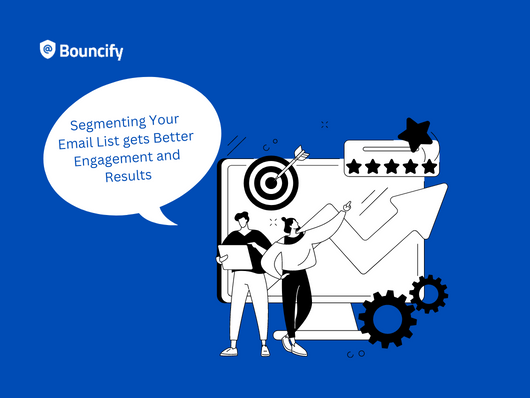How to Segment Your Email List for Better Engagement and Results?

Email marketing is one of the most effective ways to reach your audience and drive conversions. But sending the same message to your entire email list is not always the best approach. Different subscribers have different needs, preferences, and behaviors, and targeting them with relevant content can significantly improve engagement and results. In this blog post, we'll discuss how to segment your email list effectively and share some best practices to help you get the most out of your email marketing efforts.
Start with your goals and target audience:
Before you start segmenting your email list, it's important to define your goals and target audience. What do you want to achieve with your email marketing campaigns, and who are your ideal subscribers? Understanding your audience's demographics, interests, behaviors, and pain points can help you create more targeted and personalized campaigns that resonate with them.
Choose your segmentation criteria:
Once you have a clear picture of your audience, you can choose the segmentation criteria that make the most sense for your goals and content. Some common segmentation criteria include demographics (age, gender, location), behavior (opens, clicks, purchases), interests (product categories, content topics), and preferences (email frequency, type of content). You can also combine multiple criteria to create more specific segments.
Clean and organize your email list:
Before you start segmenting your email list, it's essential to clean and organize it. Remove inactive subscribers, duplicates, and invalid email addresses to ensure that your list is up to date and accurate. You can also use a tagging or labeling system to categorize your subscribers based on their segmentation criteria.
Create targeted content and campaigns:
With your segments in place, you can now create targeted content and campaigns that cater to your subscribers' interests and needs. For example, you can send personalized product recommendations based on their previous purchases, offer exclusive discounts to subscribers who haven't made a purchase in a while, or send relevant blog posts based on their content preferences. You can also use A/B testing to experiment with different subject lines, calls to action, and content formats to optimize your campaigns.
Measure and optimize your results:
Finally, it's crucial to measure and optimize your results regularly. Use your email marketing platform's analytics and reporting tools to track your open rates, click-through rates, conversions, and other key metrics for each segment. Use this data to identify what works and what doesn't and adjust your campaigns accordingly.
However, even with a well-segmented email list, there may still be email addresses that bounce or are invalid. These email addresses can negatively impact your email deliverability and sender reputation, leading to lower open rates and a higher risk of your emails ending up in the spam folder.
That's where Bouncify comes in. Bouncify is an advanced email verification and list cleaning tool that can help you identify and remove invalid and risky email addresses from your list. With Bouncify, you can quickly and easily upload your email list and have it verified to ensure that you're sending emails to real, engaged subscribers.
Bouncify uses a sophisticated verification process that checks each email address for validity, existence, and deliverability. It also flags risky email addresses, such as disposable, role-based, or known spam traps, which can harm your email reputation.
Using Bouncify to clean your email list can help you achieve better results with your email marketing campaigns. By removing invalid and risky email addresses, you can increase your email deliverability and sender reputation, leading to higher open rates, clicks, and conversions. Bouncify also offers affordable pricing plans and a user-friendly dashboard, making it accessible to businesses of all sizes.